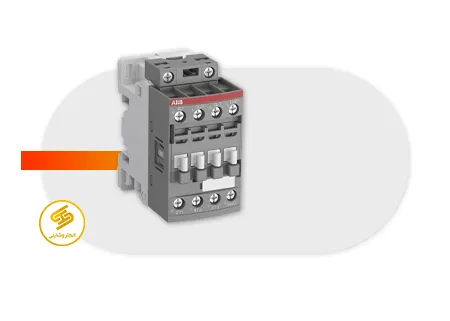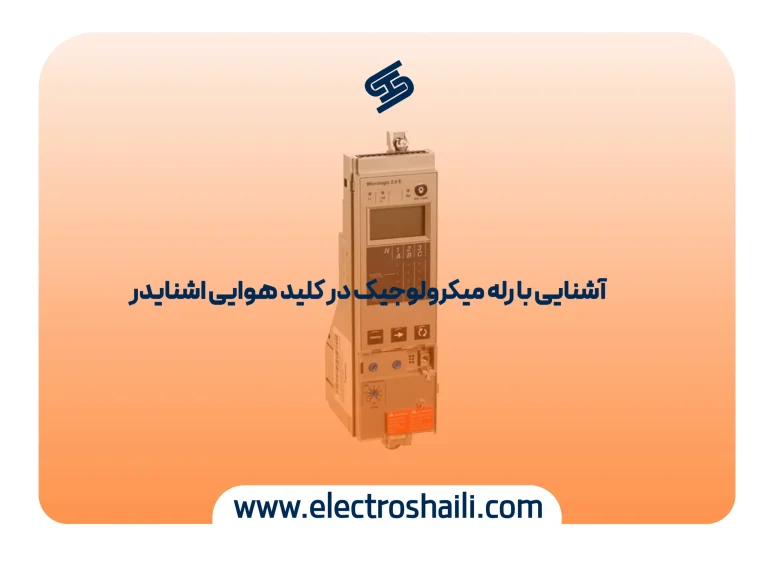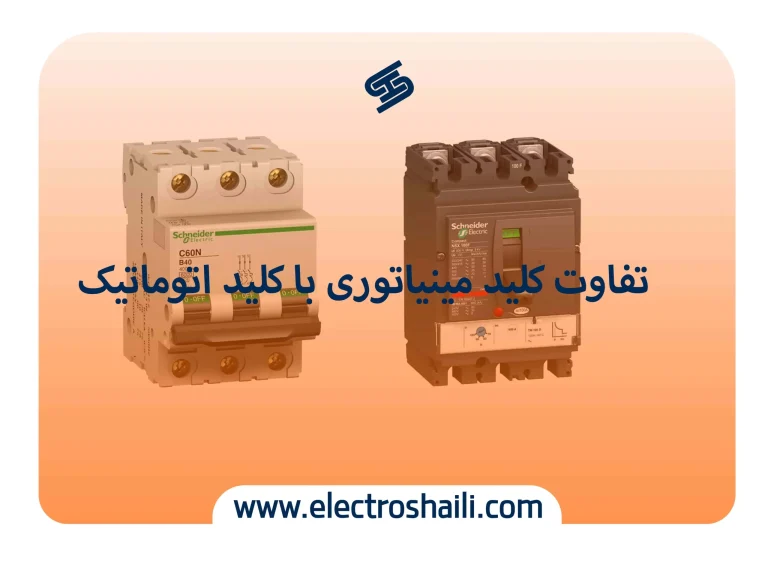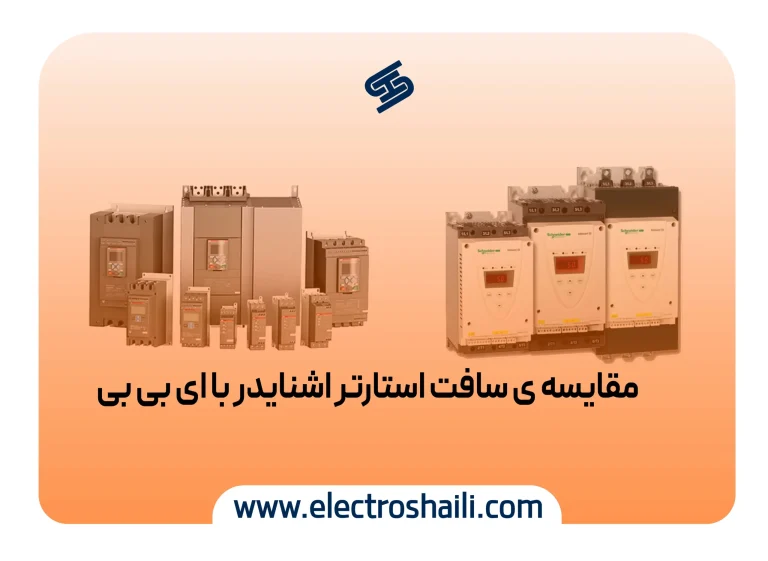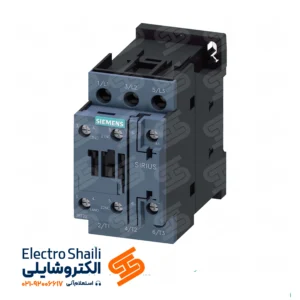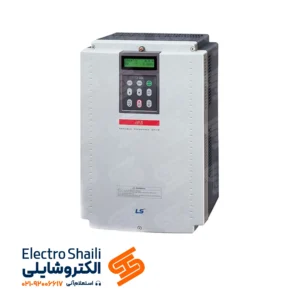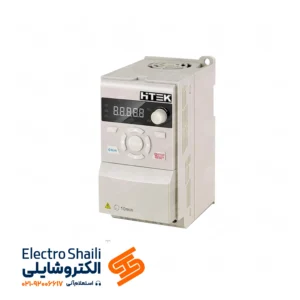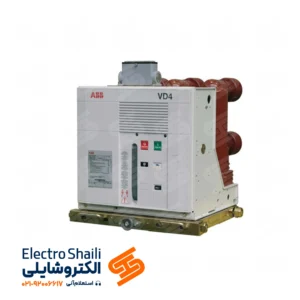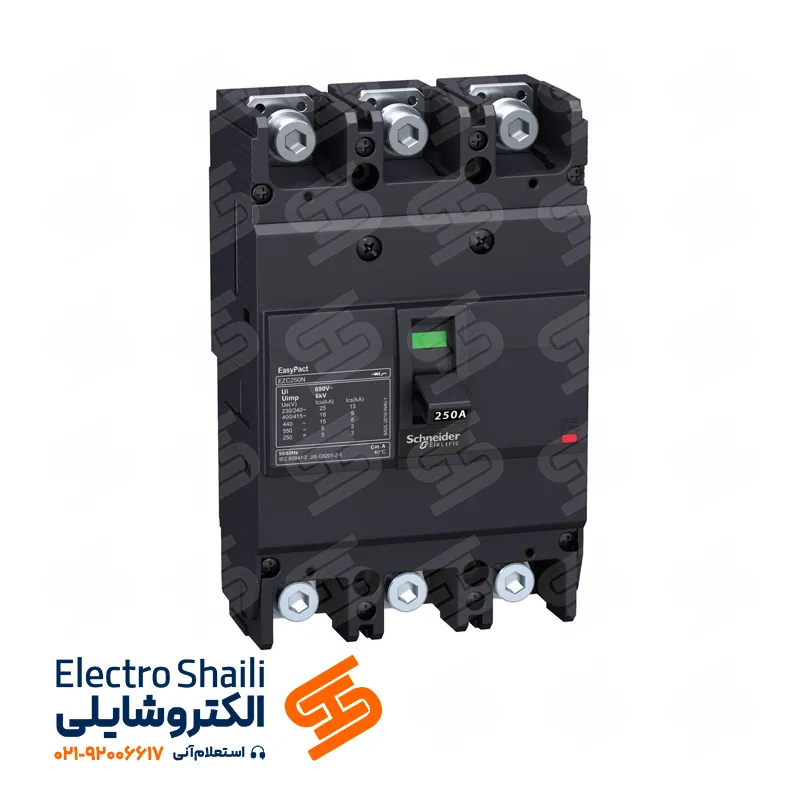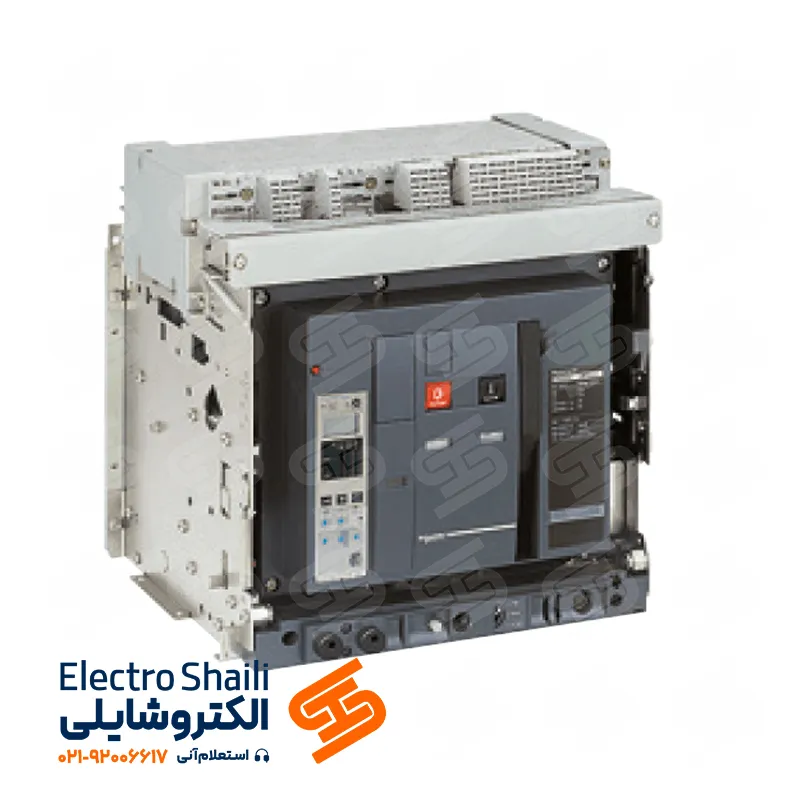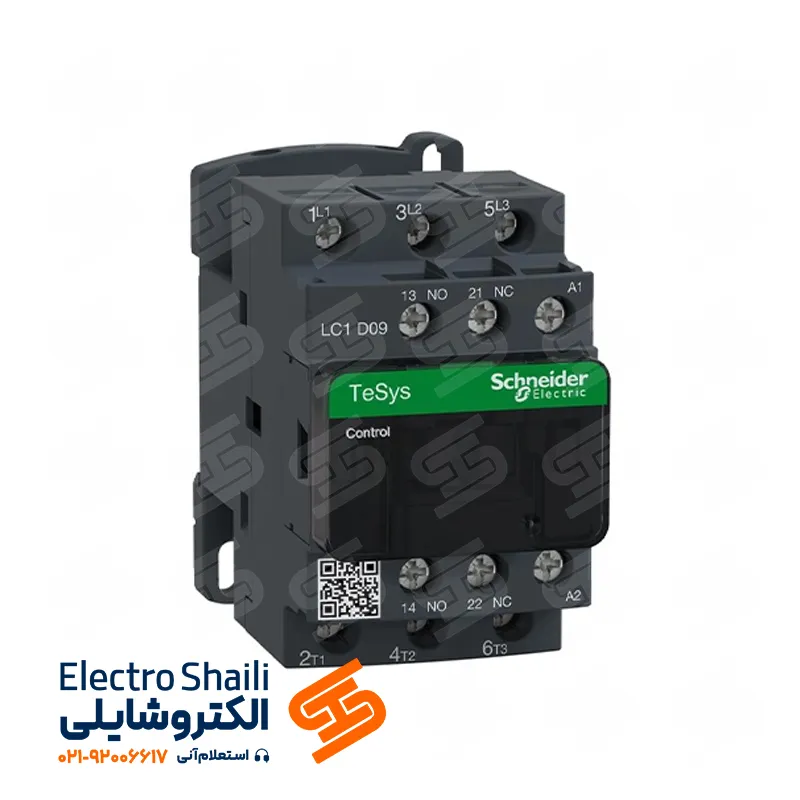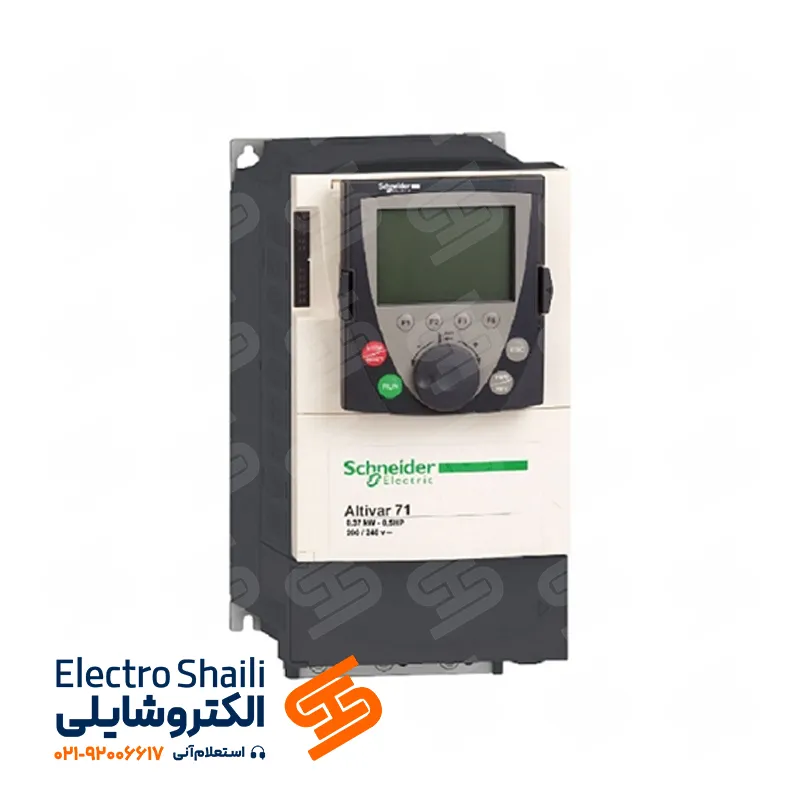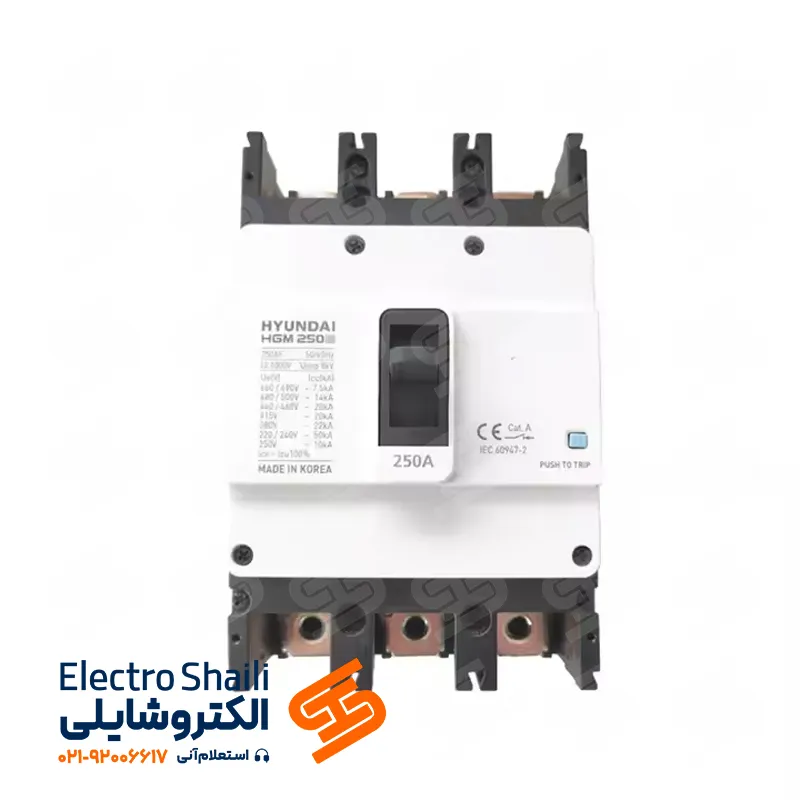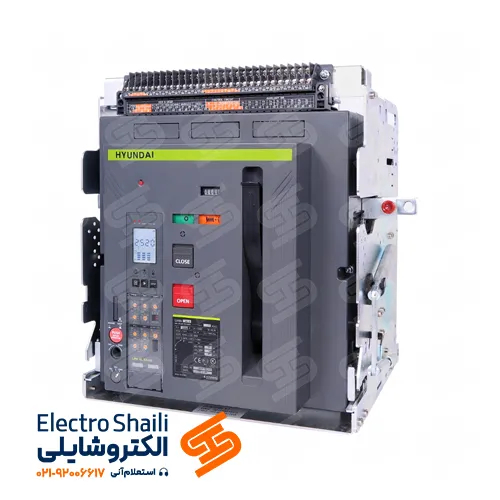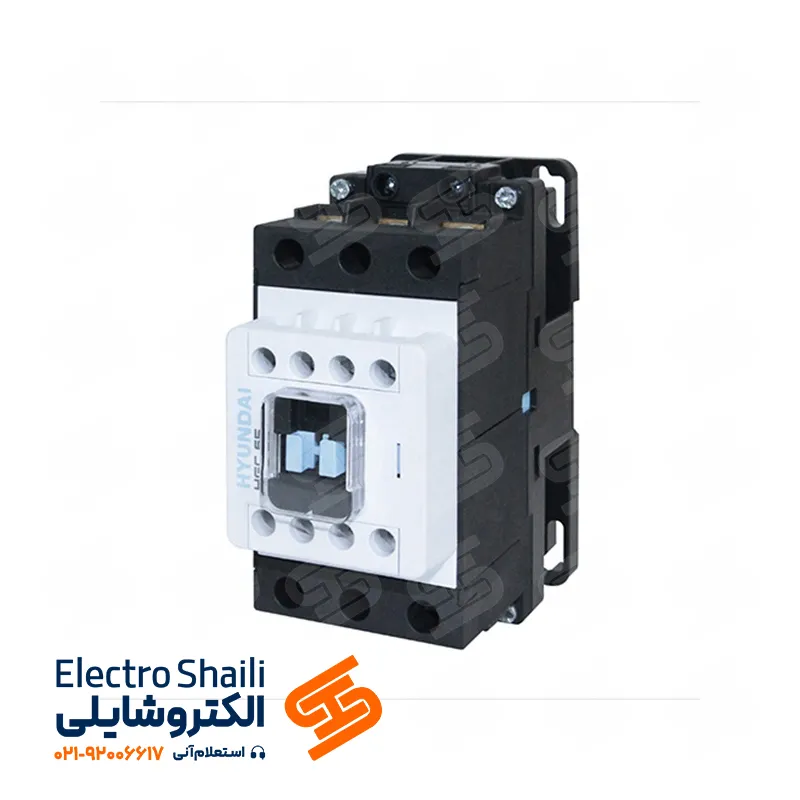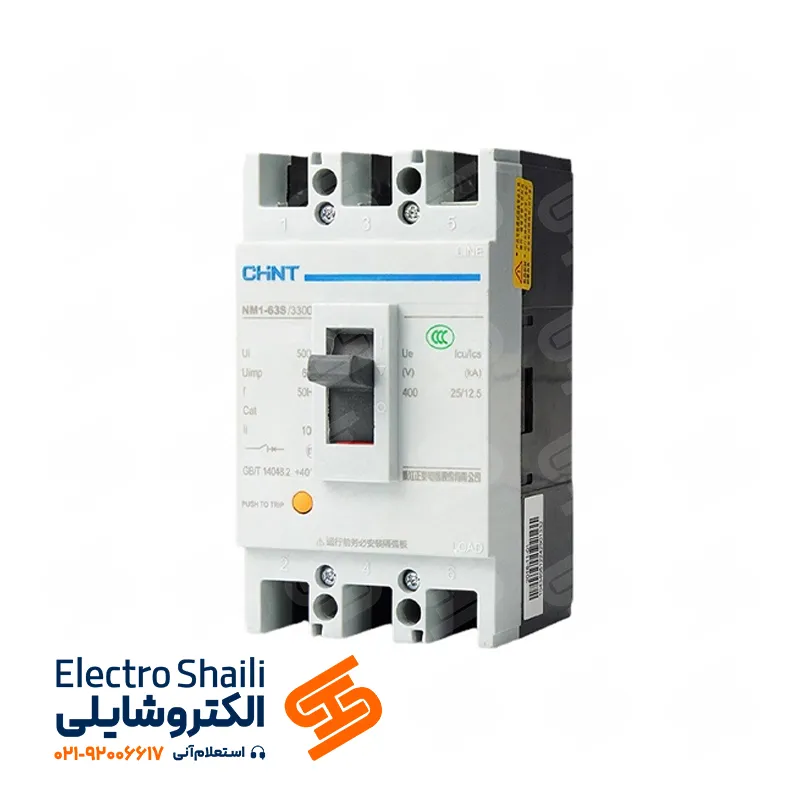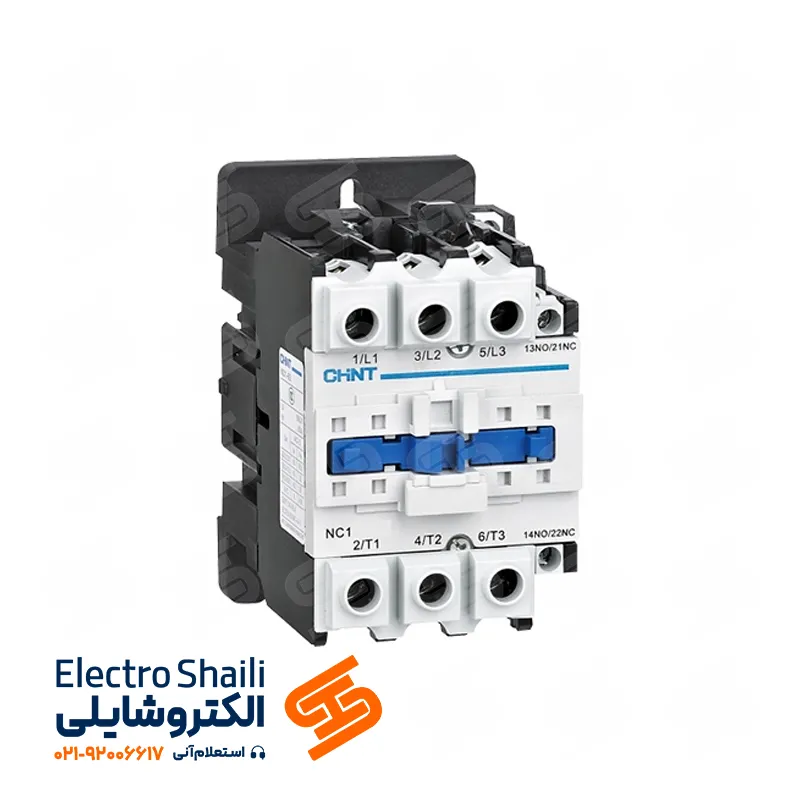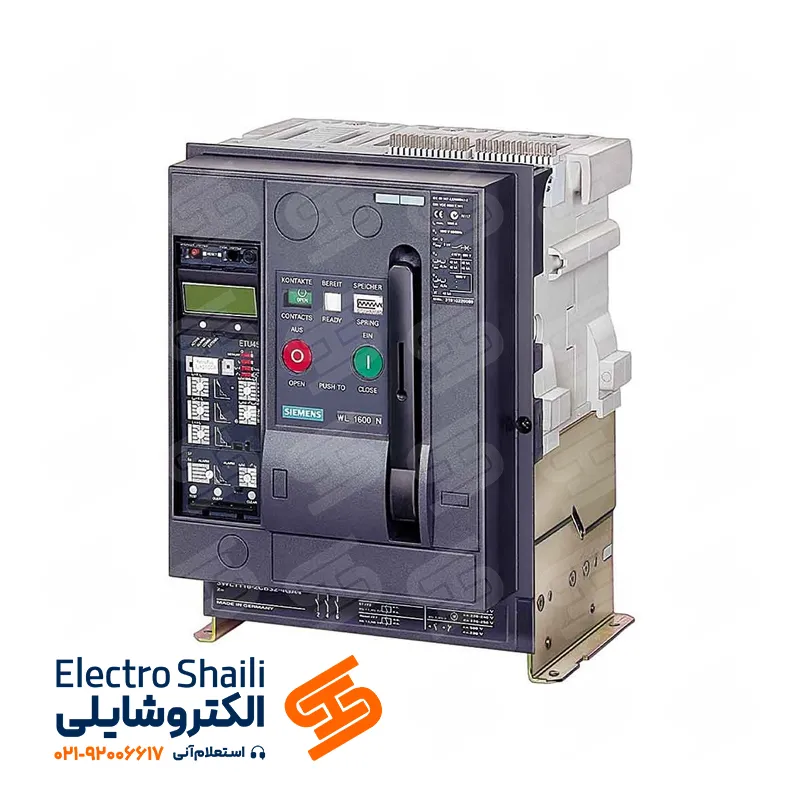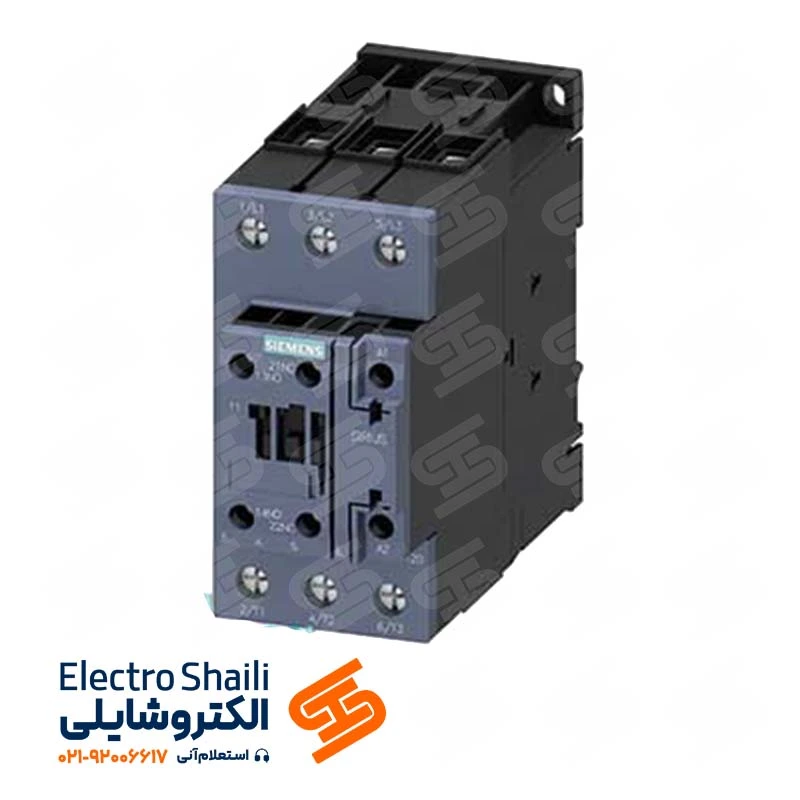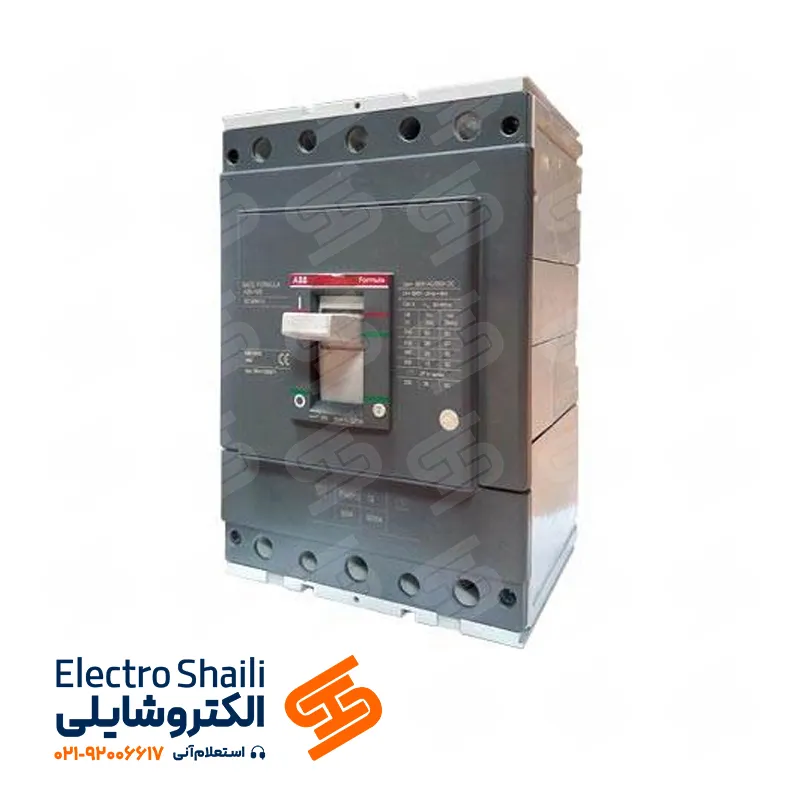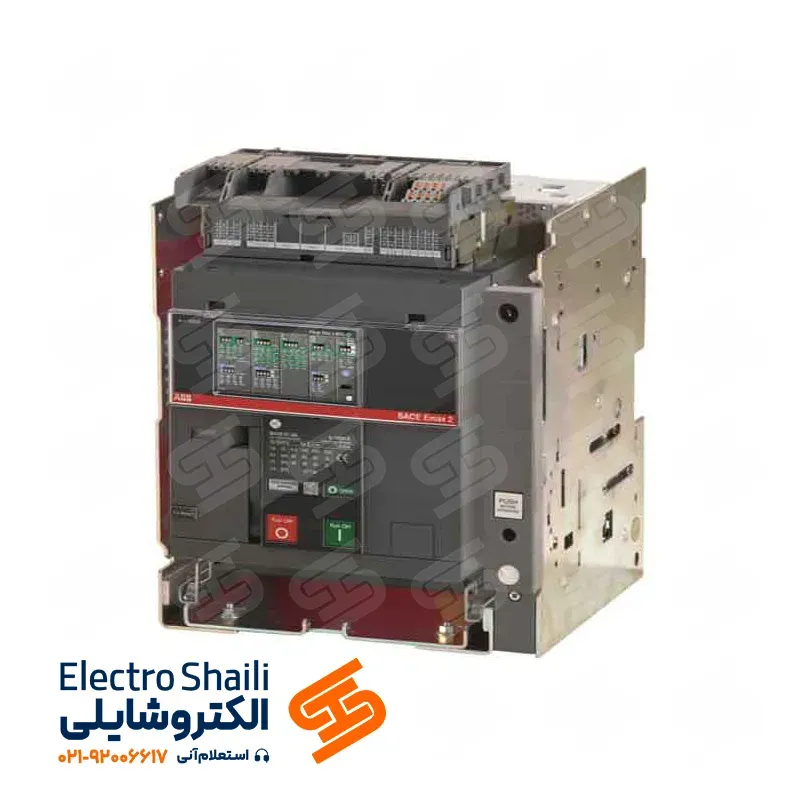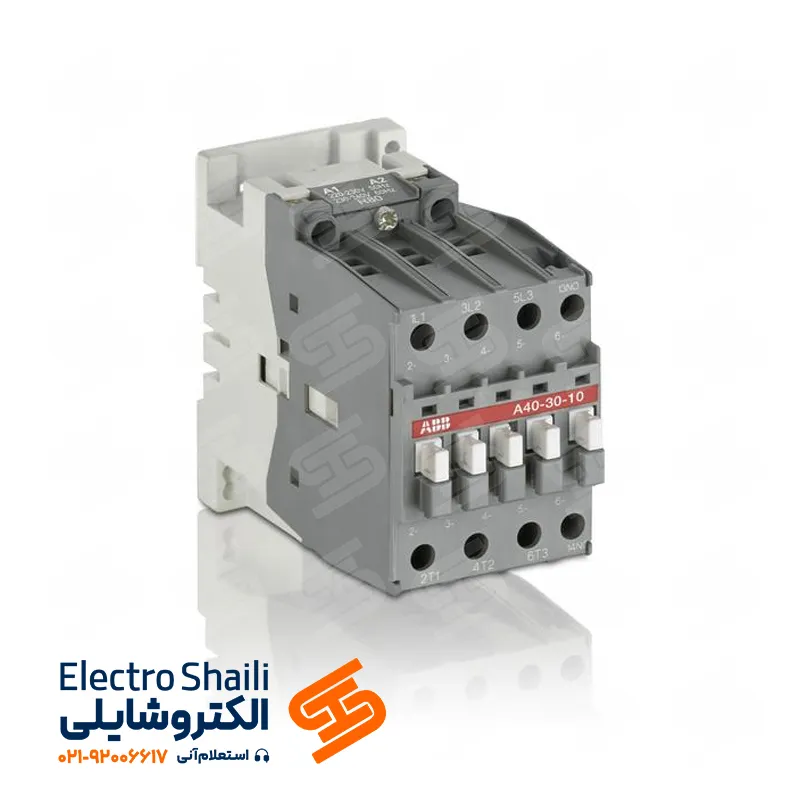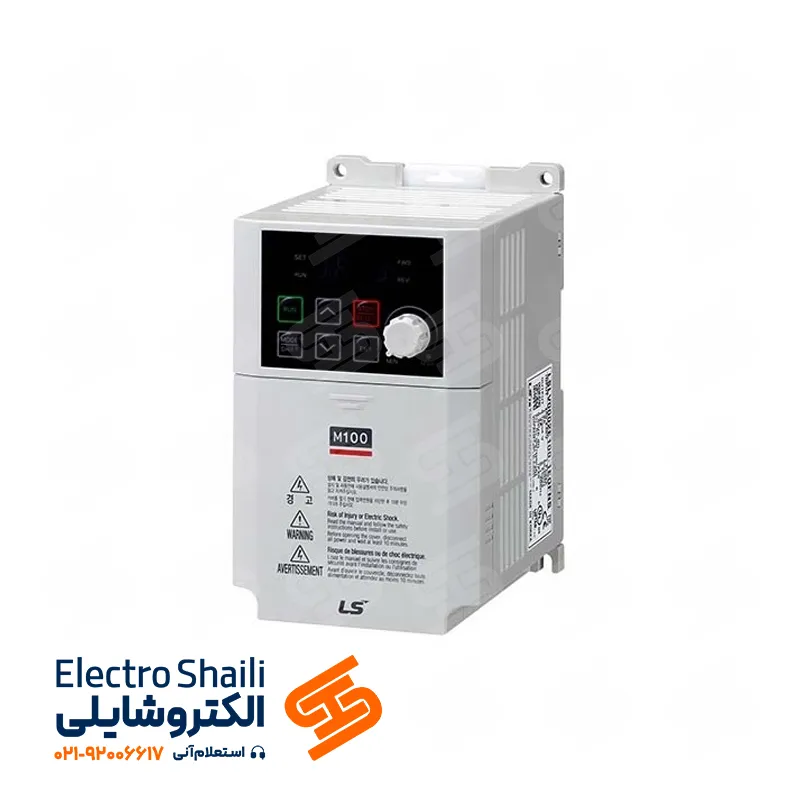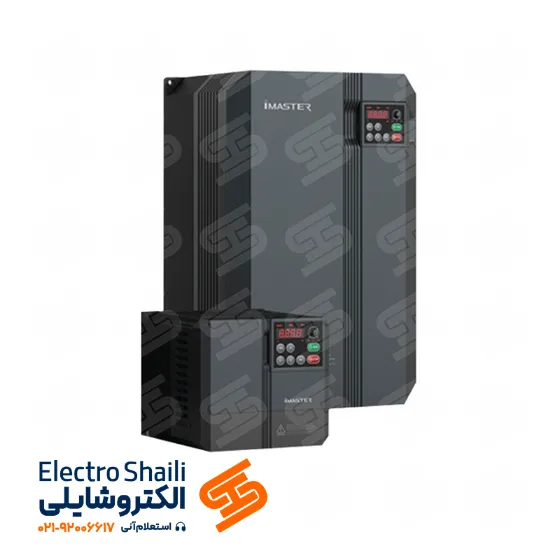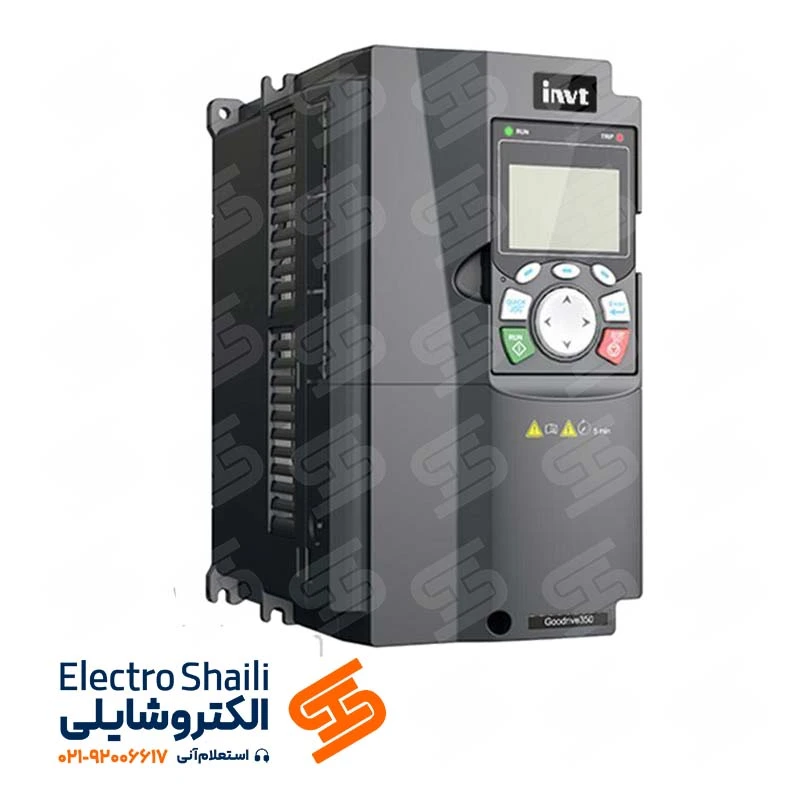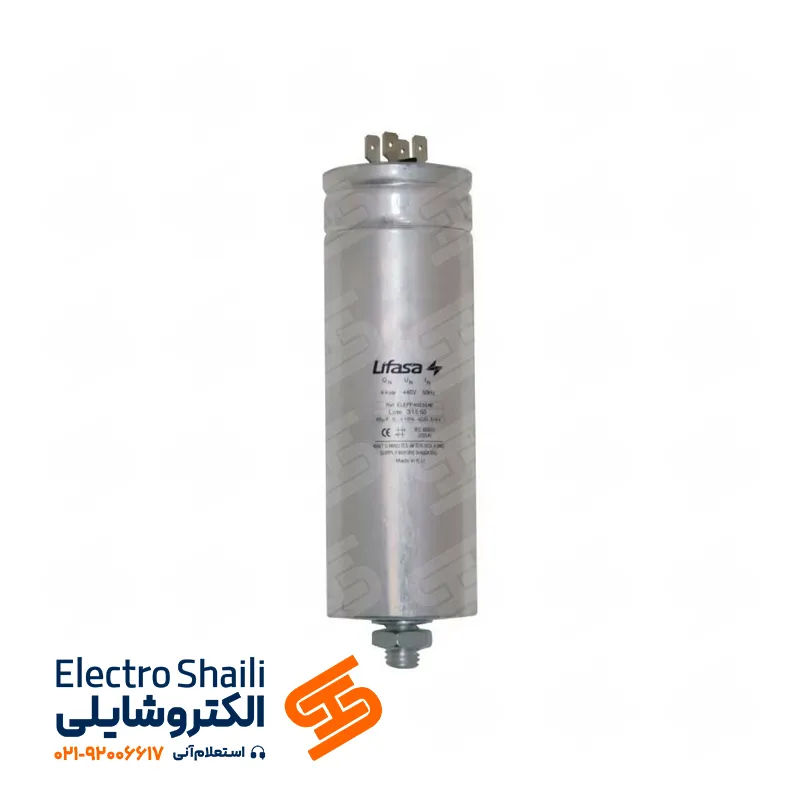Buy ABB Contactor from Iran
ABB contactor is a key equipment used to control large loads and high-power electrical equipment. These devices are mainly used to switch electric current on and off in power and control circuits. The importance of contactors in industrial and commercial environments is very high, and they are responsible for the following main tasks:
Control of large loads: Contactors help control large loads such as motors, pumps, chillers, compressors, and other high-power equipment by switching electric current on and off.
Equipment status control: With contactors, equipment status can be controlled, turning them on or off automatically or manually. This feature helps optimize energy consumption and better equipment management.
Equipment protection: Contactors act as control elements that allow electrical equipment to be safely disconnected in case of hazards such as short circuits, overloads, and excess currents, protecting the equipment from damage.
Load management: Contactors enable various loads to be switched on or off simultaneously or in a specific sequence. This capability helps optimize load distribution and prevent sudden increases in current.
Safety and ease of use: Contactors provide safety features with various designs. For example, contactors usually have thermal trip switches that automatically disconnect the circuit in case of overheating.
Automation control: Contactors play a crucial role as key components in industrial and household automation systems. They can help regulate automatic processes and changes in control systems.
Contactors are widely used in various industries such as manufacturing, energy, automotive, oil and gas, buildings, water and wastewater, mining, and more. Their importance in maintaining optimal equipment operation, increasing safety, and improving the efficiency of electrical circuits is very high.
Types of ABB Contactor Models
ABB is a large company in the field of electrical technologies and industrial automation, and it has produced various models of contactors. Below are some of the ABB contactor models mentioned.
ABB AF Series Contactor
ABB’s 3-pole AF contactors with their latest technology provide several advantages and features to optimize performance, logistics, and energy efficiency in various applications. Below is an analysis of the main advantages and features:
Main advantages:
Logistics optimization:
Fewer product types lead to easy warehouse management and reduced administrative costs.
Global support:
Coil 100–250 volts AC/DC covers the standard global network voltage and allows uniform use in different regions.
Fast wiring with Push-in Spring terminals:
Push-in Spring terminals create very high wiring speed and provide quicker installation and easier connections.
Energy saving:
The AF technology reduces coil energy consumption by 80% and generally contributes to energy savings.
Uninterrupted performance guarantee:
AF technology can bridge voltage drops and sags, ensuring uninterrupted system performance.
Key features:
Powerful performance:
Supports up to 560 kilowatts at 400 volts AC-3, 900 horsepower at 480 volts, and 2850 amps at 690 volts AC-1 for general use.
Various coil options:
Only 4 coils cover a wide range of voltages, from 24 volts to 500 volts AC and 20 volts to 500 volts DC.
24-volt DC dedicated coil:
Specifically designed for direct control by PLC output with a current greater than 250 milliamps, with low holding power consumption of up to 1.7 watts.
Various connection types:
Flexibility with various screw, Push-in Spring, and ring tongue connections.
Suppression of internal disturbances:
Contains internal disturbance suppression for better protection.
Assembly convenience:
Connection kits and locking unit sets for easy, fast, and secure assembly of starters.
Mechanically interlocked contact order:
Mechanical and interdependent contact order for reliable performance.
Overall, 3-pole AF contactors are designed to provide efficient, reliable, and energy-saving solutions for various applications, ensuring that they are recognized as an industry standard with global compatibility and optimal logistics.
ABB AE Series Contactor
Four-pole AE45 contactors are primarily designed to control non-inductive or slightly inductive loads in circuits with voltages up to 690 volts DC and 440 volts AC. These contactors are multifunctional and can also be used for various applications such as lighting control. Below are the key features:
Load type: Designed for non-inductive or slightly inductive loads, such as resistive heaters.
Voltage rating:
AC: Up to 690 volts
DC: Up to 440 volts
Pole arrangement:
Main poles: 2 normally open (N.O.) + 2 normally closed (N.C.)
Auxiliary contact blocks: Additional auxiliary contact blocks front and side-mounted.
Design type: Block-type design for AE series four-pole contactors.
Control circuit:
DC remote operation (DC)
Standard dual-cycle with DC cycles
Option for an added time-delay auxiliary contact factory-installed for “holding contact” insertion.
Accessories:
A wide range of accessories is available, allowing customization or addition of extra features.
These contactors seem suitable for various applications due to their design and specifications. The simultaneous presence of normally open and normally closed poles, along with access to auxiliary contact blocks, optimizes such contactors for multiple control scenarios. Additionally, DC operation with dual cycles and the option for delayed contact insertion indicate a robust design for reliable performance.
ABB Contactors Operating Principles
ABB contactors, as one of the leading devices in the field of electrical control and equipment, operate with principles that assist in controlling large loads and high-power equipment. Here’s a brief explanation of the operating principles of ABB contactors:
Current On/Off Control: ABB contactors are used to interrupt and establish electric current flow in power or control circuits. When the contactor is active (in the ON state), the contacts close, allowing electric current to pass through. When the contactor is inactive (in the OFF state), the contacts open, interrupting the current flow.
Electromagnetic Control: ABB contactors utilize electromagnetic force to place the contacts in open or closed positions. These forces are generated by electromagnetic solenoids that, when activated by control current, actuate the contactor.
Insulation Rating: ABB contactors have high insulation ratings, allowing them to safely carry large currents in circuits without breakdown. This feature contributes to equipment protection and user safety.
Heat Management: ABB contactors employ special designs for heat dissipation and cooling to manage the heat generated by the large currents passing through them, preventing temperature rise.
Current and Voltage Adjustment: Some ABB contactors have the capability to adjust current and voltage to match the requirements of different circuits and equipment.
Management of Start and Stop Devices: ABB contactors can be used to control start and stop devices such as motors, pumps, valves, and other equipment.
Remote Control Capability: Some models of ABB contactors support remote control features and connection to automation systems and control devices.
As observed, ABB contactors, through a combination of electromagnetic technology, heat management, safety features, and adjustable capabilities, perform diverse control and management functions in electrical circuits.
Structure and Components of ABB Contactors
ABB contactors have a complex and high-quality structure that includes various components for controlling and managing high-power electrical currents. Below are the main components of ABB contactors:
Electromagnetic Solenoid: This part of the contactor generates electromagnetic force to open and close the contacts in the control unit. When control current flows through the solenoid, electromagnetic force is created, displacing the contact mechanism.
Contacts: This part of the contactor consists of two metal pins or plates that are positioned in open or closed states. Contacts are designated as “NO” (Normally Open) or “NC” (Normally Closed) and control the conductivity or interruption of electric current.
Control Mechanism: This part of the contactor includes mechanisms for moving the contacts when the electromagnetic solenoid is activated. These mechanisms typically operate using microswitches or mechanical systems.
Protective Systems: Some ABB contactors feature protective systems such as thermal circuit breakers. These circuit breakers automatically disconnect the contacts in case of temperature rise due to excessive current, preventing damage and potential hazards.
Contactor Enclosure: This part of the contactor is used to protect internal components from dust, moisture, and other environmental factors. The contactor enclosure also acts as a barrier to prevent user access to internal components.
Control Circuits: Some ABB contactors have control circuits for adjusting and controlling the status of contacts and start-stop units. These circuits typically utilize thermal circuit breakers and microswitches.
Electrical Connections Systems: Precise and safe electrical connections between internal components of the contactor are of utmost importance. These connections include wires, terminals, and sockets associated with various contactor components.
Additionally, it should be noted that ABB contactors may have additional components and special features such as diodes for controlling reverse currents, depending on the type and model. However, the combination of the above components has made ABB contactors efficient and reliable tools for controlling and managing high-power electrical currents.
Types of Contactors
Contactors are divided into various categories based on their type and application. Below are some types of contactors:
1. AC and DC Contactors: Contactors are classified into AC and DC based on the type of electrical current they can control. AC contactors are used to control loads and equipment operating with alternating current, while DC contactors are used to control loads and equipment operating with direct current.
2. Screw Terminal and Pressure Terminal Contactors: This category of contactors is divided based on the type of terminals used to connect wires to them. Screw terminal contactors use screw terminals for wire connections, while pressure terminal contactors use pressure or quick terminals that lock with simple pressure.
3. Single Pole and Multi-Pole Contactors: This category of contactors is divided based on the number of poles (input and output terminals) they have. Single-pole contactors have only one output pole, while multi-pole contactors have multiple output poles that operate in parallel or series.
4. Main Contact and Auxiliary Contact Contactors: Contactors typically have main contacts that control the main load and auxiliary contacts that control other equipment such as signal lamps, relays, and other control devices.
5. AC-3 and AC-4 Contactors: Contactors are divided into AC-3 (for various loads such as motors) and AC-4 (for dynamic control loads such as motor brakes) based on the type of load they are intended to control.
6. Miniature Contactors: This category of contactors has smaller dimensions and lower power compared to regular contactors and is used as a suitable solution for controlling small loads and low-power applications in both domestic and industrial settings.
Additionally, depending on different needs and conditions, contactors may have special features such as protection against dust, moisture, vibration, etc.
Features and Advantages of ABB Contactors
ABB contactors are recognized as one of the top products in the electrical industry due to their unique features and advantages. Below are some features and advantages of ABB contactors:
1. Quality and Reliability: ABB, as a reputable brand in the electrical industry, is known for high quality and reliability of its products. ABB contactors are manufactured using high-quality materials and advanced technology to ensure reliable and long-term performance.
2. Longevity: ABB contactors, with their specialized design and use of premium materials, have a long lifespan and high stability, capable of resisting various environmental conditions and loads.
3. Protection and Safety: ABB contactors provide safety to both individuals and equipment with appropriate protective and control features. These products typically have protective relays to detect and prevent electrical accidents.
4. Silent Operation: One of the significant advantages of ABB contactors is their silent operation. This feature is particularly important in environments where noise-sensitive loads need to be controlled.
5. Adjustability and Versatility: ABB contactors are available in different models and sizes, allowing users to choose an appropriate option according to their needs. Some models also have the capability to adjust protective current and other parameters.
6. Advanced Technology: ABB continuously improves its contactors using innovative technologies and offers intelligent features such as remote control, connectivity to automation systems, and IoT.
7. Ease of Installation and Maintenance: The suitable design of ABB contactors helps users to easily install them and perform repairs and maintenance quickly when needed.
8. Technical Support: ABB, as a large company, has an extensive network of technical support and after-sales services to assist users in guidance and problem-solving when needed.
These features and advantages have made ABB contactors a popular choice in various industries and for diverse applications.
Installation, Commissioning, and Maintenance of ABB Contactors
Installation, commissioning, and maintenance of contactors are crucial aspects of their application in electrical systems. Below, I explain the steps for installing, commissioning, and maintaining contactors:
Installation:
1. Selecting a Suitable Location: Before installing the contactor, consider a suitable location for it. The location should be accessible and protected from harmful elements such as moisture, dust, and high temperatures.
2. Electrical Connections: Make electrical connections between the contactor and wires carefully and following safety standards. Ensure that connections are securely made using appropriate tools.
3. Control Connections: If the contactor has auxiliary contacts for controlling other devices, make control connections carefully as well.
Commissioning:
1. Parameter Settings: If the contactor has parameter settings (such as setting protective current), ensure that you have adjusted the values appropriately according to the system requirements.
2. Performance Testing: After installation and initial settings, test the contactor. Ensure that the contactor opens and closes properly and all contacts function correctly.
Maintenance:
1. Periodic Inspection: Periodically inspect the contactor to ensure its proper performance. This includes checking electrical connections, contact operation, and all important components.
2. Cleaning: Regularly clean the contactor to prevent the accumulation of dust and debris. Use appropriate tools for cleaning if necessary.
3. Replacement of Other Parts: If the contactor has auxiliary contacts or other replaceable parts, replace them if necessary.
By following the installation, commissioning, and maintenance steps properly, contactors operate effectively and without issues in electrical systems, ensuring safety and optimal performance of equipment. It is also recommended to use the manufacturer’s instruction manual and relevant standards for installation and commissioning.

